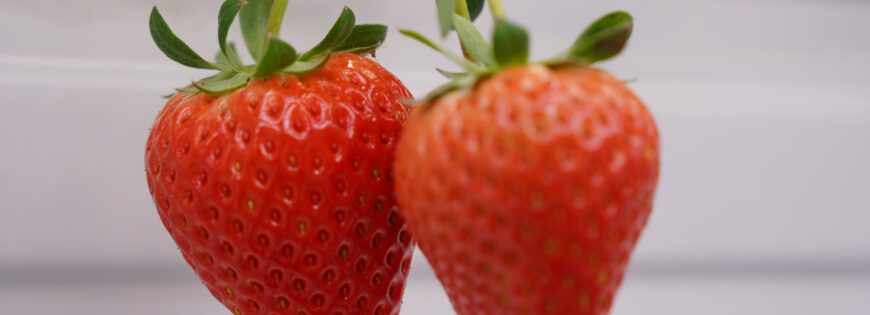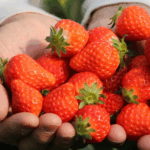South Korea is blessed with a wide variety of strawberries. Thanks to advanced farming methods, Korean farmers have successfully developed new strawberry varieties with sweet flavors and impressively large—even jumbo—sizes.
This uniqueness makes Korean strawberries a major attraction. Today, strawberries from the Land of Morning Calm are exported to various countries around the world. In Indonesia, the cultivation of Korean strawberries has also begun in an effort to produce high-quality strawberries, just like in Korea.
Korean strawberries come in several types, each with its own special characteristics. Here are the most popular varieties of Korean strawberries—you’re sure to love them!
Types of Korean Strawberries
Korean strawberries are a cultural icon, beloved both locally and internationally for their sweet flavor, fragrant aroma, and juicy flesh. Known in Korea as the “King of Winter Fruits,” strawberries are harvested in abundance during the winter season.
In Korea, luxury hotels even serve strawberry buffets featuring a variety of strawberry-based cocktails and desserts to celebrate the winter fruit.
While Korean strawberries are generally popular, the market offers many varieties, each with its own unique appeal. That’s why it’s important to know which varieties are the best so you can enjoy the flavor that suits your taste the most.
Here are some of the best strawberry varieties in Korea, along with important information about each:
Seolhyang Strawberries (설향 딸기)
Seolhyang strawberries are the most popular variety in South Korea, accounting for 90% of strawberries sold. Seolhyang means “the scent of falling snow,” referencing the fact that these strawberries ripen around the time Korea sees its first winter snow.
Introduced in 2005, Seolhyang is a native Korean variety developed from a cross between two Japanese varieties—Janghee and Red Pearl. It combines desirable traits like juicy flesh, refreshing flavor, and pest resistance.
Seolhyang strawberries have a long triangular shape and a balanced sweet-sour taste. Their soft, tender flesh gives them a smooth texture.
Maehyang Strawberries (매향 딸기)
Maehyang strawberries are the first original Korean strawberry variety and account for 90% of Korea’s strawberry exports, generating around US$20 million in annual revenue. This premium variety is especially popular in regions like Hong Kong and Singapore.
So prominent are Maehyang and Seolhyang strawberries that they have received awards from the Prime Minister and even the President of Korea for their excellence.
Maehyang strawberries contain more sugar than Seolhyang and have better shelf life, making them ideal for export. Their firm flesh offers a more enjoyable texture compared to Seolhyang.
King’s Berry (대왕 딸기)
King’s Berry strawberries are cultivated exclusively in Nonsan, Chungcheongnam-do. These strawberries are exceptionally large—while Seolhyang strawberries weighing over 20 grams are considered big, King’s Berry strawberries typically weigh between 30 to 50 grams and can even reach 100 grams each.
This makes them 2–3 times larger than most standard strawberries, and their size is achieved naturally, without growth accelerators.
King’s Berry strawberries also have a higher sugar content than regular strawberries. Their intense sweetness and juiciness make them one of Korea’s finest strawberry varieties.
Santa Strawberry (싼타 딸기)
Grown in Gyeongsangbuk-do, Santa strawberries are the first Korean variety to sign exclusive rights agreements with China and Southeast Asia due to their popularity in those regions. The unique name “Santa Strawberry” comes from the fact that the fruit tastes its best and most fragrant around Christmas time.
Santa strawberries have a sweet aroma similar to that of plums and are known for their large size and firm texture.
Sancheong Strawberry (산청딸기)
Sancheong strawberries are grown in Sancheong-gun, Gyeongsangnam-do—the largest strawberry-producing area in South Korea—and are widely loved for their extra-sweet taste. This sweetness is attributed to ideal growing conditions, an abundance of clean water, and fertile yellow soil due to proximity to Mt. Jirisan.
Sancheong strawberries are also highly resistant to rot and disease, as they are cultivated on “high beds”—raised platforms above the ground.
That’s a quick guide to the types of Korean strawberries you should know about. Now you can choose your favorite based on the unique characteristics of each variety!


